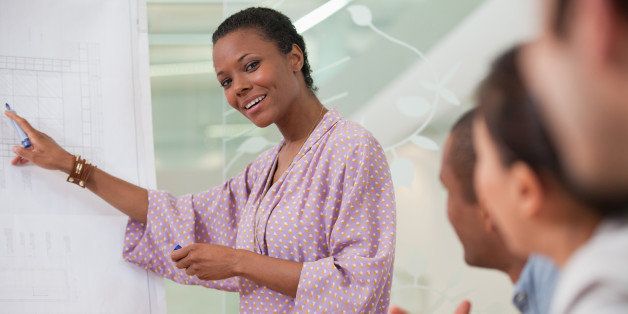
While powerful and famous leaders are deeply inspiring public figures, for most of us, our first role models don't grace the pages of history books or hold elected office in the halls of power.
Often, our most important mentors are the people whose work goes unnoticed by many and might only affect a few. These are the people who guided us on issues we cared about and showed us that change was possible: our parents, our neighbors, and our teachers.
Like many women, my mother was my first and most significant role model. She always questioned the systems around her and stood up for what she believed in, despite significant risks. Most of all, my mother taught me to be an advocate -- for myself and for others. Her leadership by example still deeply informs my work on issues of women's empowerment.
In the same way that my mother influenced me, every day women throughout our country are leading and affecting change at every level, starting with the individual. These women are the grassroots trailblazers who know that collective action grows from one woman taking a stand on an issue she cares about and inspiring others to take action as well.
Women like Cristina Jimenez of United We Dream Network, Sarita Gupta and Ai-jen Poo of Caring Across Generations, and Alicia Garza of the National Domestic Workers Alliance and #BlackLivesMatter have stood up for what they believe in and they are building powerful movements for change. Countless other women -- mothers, business leaders, indigenous activists, PTA presidents, faith leaders, community advocates -- are doing the same.
All of these women know that power is not just a vote in the legislature or a seat on a board. Power is realizing your individual ability to make a positive difference on the issues you care about. They prove that no matter how small or large a women's sphere of influence, the ripple effect of her actions is undeniable.
Unfortunately, we still need many more female leaders. Women today represent only 12 percent of mayors of the largest American cities, 10 percent of governors, 19 percent of congressional seats, and 20 percent of senate seats, according to a Center for American Progress report. For women of color, these numbers are even lower.
In the workforce, women still face a glass ceiling that limits our climb up the career ladder. Though women now represent more than half the national workforce, and on average, attain more education than me, they are far less likely to receive raises and promotions in their careers. Not only that, they are less likely to ask for them.
Despite our significant progress in acquisition of rights and leadership roles over the past 100 years, women's equal rights are still illusive throughout all levels of society -- in the workforce, in government and in our culture. Women are not at the highest level of decision-making tables in sufficient numbers and still remain unable to break through the structural barriers that limit our equal participation nationally and globally.
To achieve gender equality, women must move beyond working in silos on individual issues or within individual organizations. Instead, they must partner both with other women AND with men in collective action across issues to achieve significant, long-lasting change. Working together with a shared vision for the future, we can accelerate the full empowerment of women and girls and in partnership with men and boys.
Many men are already working for gender equality both in the workforce and in the home, but their stories are not yet being told at large. The roles of caring for and providing for families are becoming more flexible. And with less stereotyping of any kind, everyone has greater freedom to contribute at home or in public life. The sharing of family responsibilities allows for more equal access to power and influence for everyone at all levels of our democracy and society.
The work of engaging women and a broad spectrum of people in elected office and other sectors has much work to be done. But first, men and women must realize that all of our actions together are needed to achieve change and then work together to create it.
My mother once told me, "Democracy is a love story." I didn't know what she meant then. Now I can see that as we balance access to power, for women and men and for all people, democracy is a love story.
That new story has a strong beginning. Let's continue writing it together.
It's time for collective action.